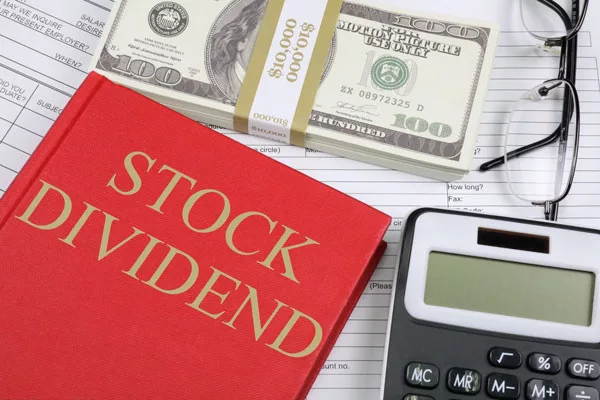Dividend Stocks for Seniors: Your Free Golden Ticket to Passive Income in Retirement | Vanika Retirement Guide
- Introduction: The Golden Ticket to Passive Income in Retirement
- What are Dividend Stocks? A Quick Refresher
- High-Dividend Yield Stocks
- Blue-Chip Dividend Stocks: The Reliable Players in the Game
- DRIPs (Dividend Reinvestment Plans): Making Your Dividends Work for You
- Bond Ladders for Retirement: Diversifying Your Portfolio
- Corporate vs. Government Bonds: Where Should Seniors Lean?
- The Many Benefits of Dividend-Paying Stocks
- The Other Side of the Coin: Risks of Dividend Stocks
- Fixed Income Strategies for Seniors: Beyond Dividend Stocks
- Conclusion: Making the Most of Your Golden Years with Dividend Stocks
- Frequently Asked Questions
Introduction: The Golden Ticket to Passive Income in Retirement
Ah, dividend stocks for seniors! Retirement is that golden phase where you get to kick back, pursue hobbies and maybe even take that world tour you always dreamed of. But here’s the catch: to really enjoy these years, a steady income stream is key.
Dividend paying companies are a source of regular income for retirees, offering predictable dividend payouts to cover living expenses.
When planning for retirement, you should consider multiple passive income sources and income streams to boost financial security and stability. Creating a robust dividend portfolio requires selecting quality stocks and diversifying across various economic sectors to minimize risks and maximize returns.
This is where dividend stocks, the unsung heroes of the financial world, come in. They might just be the financial cushion you’ve been looking for. Through smart retirement planning, dividend stocks can contribute to more financial freedom and independence in your retirement years.
What are Dividend Stocks? A Quick Refresher
For those who missed the stock market class in school (or were too busy daydreaming about their next vacation), dividend stocks are shares in dividend paying companies that return a portion of their profits to shareholders through regular payments.
Think of it as a thank you note, but instead of words, you get cash. Nice, right?
For many retirees, these stocks are a reliable income source.
High-Dividend Yield Stocks
Not all dividend stocks are created equal. Some are more generous than others. High-dividend yield stocks are the big hearted ones of the bunch. The dividend yield is the annual dividend payment divided by the stock’s price. So, a higher yield means you’re getting more bang for your buck. For retirees, this means more income without touching the principal. High-dividend yield stocks can help retirees generate income and have enough income to cover living expenses. However, it is crucial to assess a company’s financial health, payout ratio, and debt levels when evaluating high dividend yields. A very high dividend yield can signal that a company’s stock price has fallen significantly, indicating potential financial trouble and a high risk of a dividend cut.
Plus, these stocks provide income for those seeking financial stability in retirement.
Blue-Chip Dividend Stocks: The Reliable Players in the Game
In the stock market world, blue-chip stocks are like the grandparents – wise, experienced and reliable. These are shares in high quality companies with a long history of paying consistent dividends. For example, Walmart has a long history of raising its dividend and is considered a Dividend Aristocrat. Similarly, Johnson & Johnson has an impressive track record of dividend increases spanning more than 60 years, making it a prime example of a reliable blue-chip stock.
Think of brands that have been around for ages and have weathered economic downturns. Investing in these stable companies can help you build wealth over time as their stability and steady dividends support gradual portfolio growth. For instance, PepsiCo has consistently increased its dividend for more than 25 years, making it a Dividend Aristocrat. Blue-chip dividend stocks are loved by long term investors who want both stability and growth.
DRIPs (Dividend Reinvestment Plans): Making Your Dividends Work for You
Remember the fun of watching your money grow in a piggy bank? DRIPs offer a similar thrill with dividend reinvestment at its core. Instead of taking the dividend as cash, you reinvest it to buy more shares through the plan.
Over time, these drip shares accumulate and can impact your tax situation as reinvested dividends are typically taxed as income in the year they are paid. Regular reinvestment in DRIPs also allows dollar cost averaging, where you buy more shares when prices are low and fewer when prices are high, reducing the impact of market volatility. Dividends reinvested through DRIPs are still considered taxable income by the IRS. DRIPs harness the power of compounding, allowing reinvested dividends to buy more shares, which then generate larger dividend payments.
This can lead to compound growth. It’s like your money is having babies and those babies are having babies. Before you know it, you’ve got a big happy financial family! Be sure to track the purchase price of shares acquired through DRIPs as this is important for calculating capital gains taxes when you sell.
Bond Ladders for Retirement: Diversifying Your Portfolio
While dividend stocks are great, it’s always wise not to put all your eggs (or in this case, money) in one basket. Bond ladders are an important part of a diversified portfolio and involve buying bonds that mature at different times.This strategy provides regular income and reduces interest rate risk. By staggering maturities, bond ladders can help manage the impact of changing interest rates on your retirement income, so you have more stable fixed income over time. It’s like having a safety net beneath your high-flying financial trapeze act.
Corporate vs. Government Bonds: Where Should Seniors Lean?
Both corporate and government bonds have their advantages. Corporate bonds offer higher yields but more risk than government bonds. Government bonds are more secure but may offer lower returns.
It’s like choosing between a roller coaster ride and a boat ride. Both are fun; it just depends on your risk tolerance.
The Many Benefits of Dividend-Paying Stocks
Apart from the financial gains, dividend stocks offer other perks. One big benefit is the potential for steady dividend income which can provide a cash flow for investors. They can be a hedge against inflation, provide tax benefits and even potential for capital appreciation.
When considering the tax benefits, it’s important to understand the tax implications of investing in dividend stocks. This includes how capital gains taxes apply when you sell shares and how qualified dividends may be taxed at a lower rate than ordinary income making them more tax efficient for many investors.
It’s like finding out your regular coffee shop also offers loyalty points, free refills and occasional discounts. Who wouldn’t love that?
Keep in mind however, dividend payments can increase your taxable income which may affect your overall tax situation.
The Other Side of the Coin: Risks of Dividend Stocks
Life is all about balance and the stock market is no different. While dividend stocks have many benefits, they have risks. Companies may stop paying dividends if their financial situation changes. Market volatility, potential dividend cuts and economic downturns can affect returns. Additionally, as interest rates rise, dividend stocks may become less attractive compared to safer, high-yield fixed-income assets like bonds. While dividend stocks can help you earn more money over time, you may also owe taxes on those earnings. Additionally, dividend stocks tend to be less volatile than other types of stocks, making them potentially more resilient during market downturns.
But with proper planning and diversification you can navigate these choppy waters. It’s also important to understand your tax liability when investing in dividend stocks.
Fixed Income Strategies for Seniors: Beyond Dividend Stocks
Diversification is key. Apart from dividend stocks and bonds, consider other fixed income options like CDs, money market funds and also mutual funds, exchange traded funds (ETFs), and real estate investment trusts (REITs) as additional sources of income. The more diversified your portfolio the better you are prepared for market uncertainties.
Using retirement accounts can provide tax-advantaged investing opportunities to help you grow more and pay less taxes.
A savings account can be a safe place for emergency funds while earning interest with minimal risk.
Rental property is another source of passive income for retirees, offering steady cash flow through renting out real estate.
Conclusion: Making the Most of Your Golden Years with Dividend Stocks
Retirement is the time to relax and enjoy the fruits of your labor. Dividend stocks can be part of your retirement income and investment plan. And dividend stocks can add some extra financial fruit to your basket. With the right strategy you can have a steady income stream so you can live your golden years in style.
To make sure you have enough money throughout retirement consider developing a passive income strategy that fits your needs and goals.
Funny anecdote: “Remember when the only dividends we cared about were the extra fries at the bottom of the bag? Well, times have changed but the joy of getting something extra remains the same!”
Frequently Asked Questions
What are dividend stocks?
Dividend stocks are shares of companies that return a portion of their profits to shareholders in the form of dividends. These dividends can be in cash or additional shares.
Why are dividend stocks good for seniors?
Dividend stocks offer a steady income stream, perfect for retirees looking for stable returns without selling their stock holdings.
What are high-dividend yield stocks?
High-dividend yield stocks are those with a higher dividend yield compared to other stocks in the market. The yield is calculated as the annual dividend payment divided by the stock’s current market price.
How do Blue-chip dividend stocks differ?
Blue-chip dividend stocks are shares of well-established, financially stable companies with a history of paying consistent dividends. They are considered safer investments compared to newer or less stable companies.
What are Dividend Reinvestment Plans (DRIPs)?
DRIPs allow shareholders to reinvest their cash dividends into additional shares or fractional shares of the underlying stock, often without any commission.
How do bond ladders help retirees?
Bond ladders involve buying multiple bonds with different maturity dates. This strategy provides a steady income stream and reduces interest rate risk.
What’s the difference between corporate and government bonds?
Corporate bonds are issued by companies, government bonds are issued by national governments. Corporate bonds offer higher yields but more risk than government bonds.
Why are dividend stocks good?
Dividend stocks offer two benefits: potential for growth and a steady income stream. This is especially helpful during market downturns.
Are there risks with dividend stocks?
Yes, like all investments, dividend stocks have risks. Companies can stop paying dividends and stock prices can fluctuate based on market conditions.
What are fixed income strategies for seniors?
Fixed income strategies involve investing in instruments that provide a fixed return, like bonds or CDs. These strategies provide a steady income stream with lower risk than equities.
Remember, while dividend stocks and bonds are great for a retirement portfolio, always consult with a to make sure your investments fit your goals and risk tolerance.



